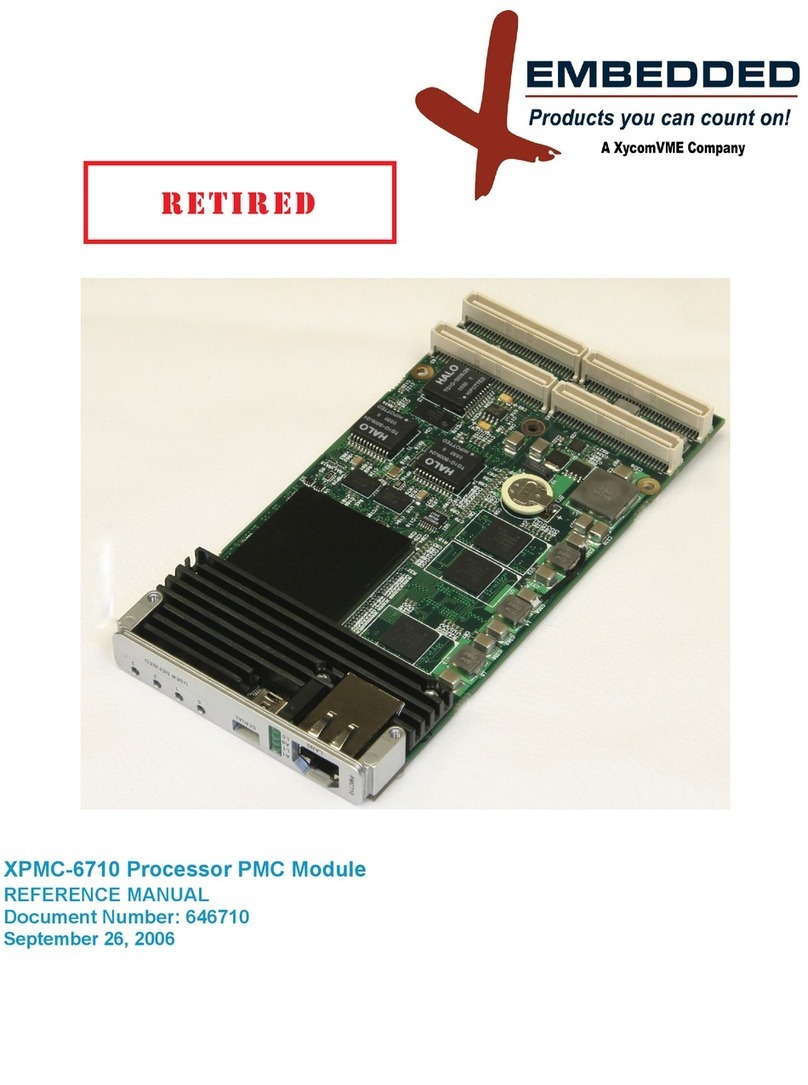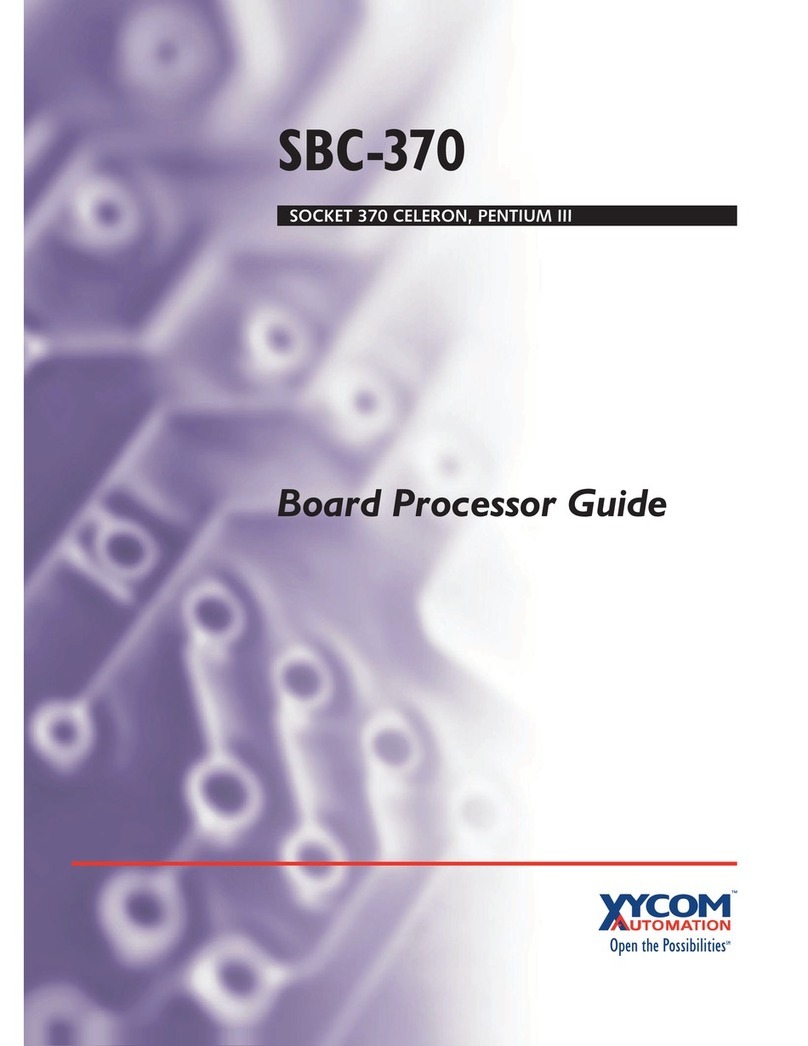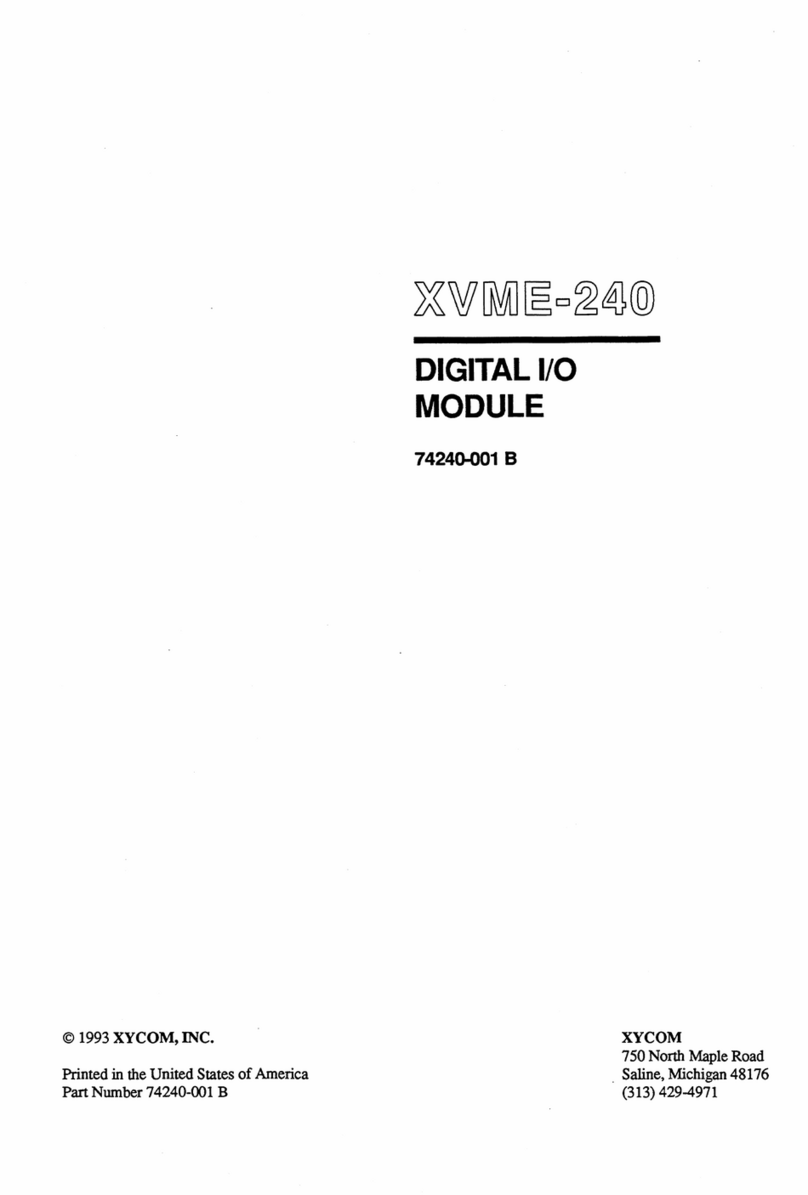
Xycom Revision Record
Revision Description Date
A Manual Released 9/92
B Manual Updated (incorporated PCN 178) 11/94
C Not Released
D Manual Updated (revision level only) 11/97
E Manual Updated 2/98
F Manual Updated 7/00
Trademark Information
Brand or product names are registered trademarks of their respective owners.
Copyright Information
This document is copyrighted by Xycom Incorporated (Xycom) and shall not be reproduced or copied
without expressed written authorization from Xycom.
The information contained within this document is subject to change without notice.
Warning
This is a Class A product. In a domestic environment this product may cause radio interference in which
case the user may be required to take adequate measures.
European Union Directive 89/336/EEC requires that this apparatus comply with relevant ITE EMC
standards. EMC compliance demands that this apparatus is installed within a VME enclosure designed to
contain electromagnetic radiation and that will provide protection for the apparatus with regard to
electromagnetic immunity. This enclosure must be fully shielded. An example of such an enclosure is a
Schroff 7U EMC-RFI VME System chassis that includes a front cover to complete the enclosure.
The connection of nonshielded equipment interface cables to this equipment will invalidate EU EMC
compliance and may result in electromagnetic interference and/or susceptibility levels that violate
regulations that apply to legal operation of this device. It is the responsibility of the system integrator
and/or user to apply the following directions, as well as those in the user manual, that relate to installation
and configuration:
All interface cables should include braid/foil-type shields. Communication cable connectors must be metal
with metal backshells (ideally, zinc die-cast types), and provide 360 degree protection about the interface
wires. The cable shield braid must be terminated directly to the metal connector shell. Shield ground drain
wires alone are not adequate. VME panel mount connectors that provide interface to external cables (e.g.,
RS-232, SCSI, keyboard, mouse, etc.) must have metal housings and provide direct connection to the
metal VME chassis. Connector ground drain wires are not adequate.
Xycom Automation
750 North Maple Road
Saline, MI 48176-1292
734-429-4971
734-429-1010 (fax)































